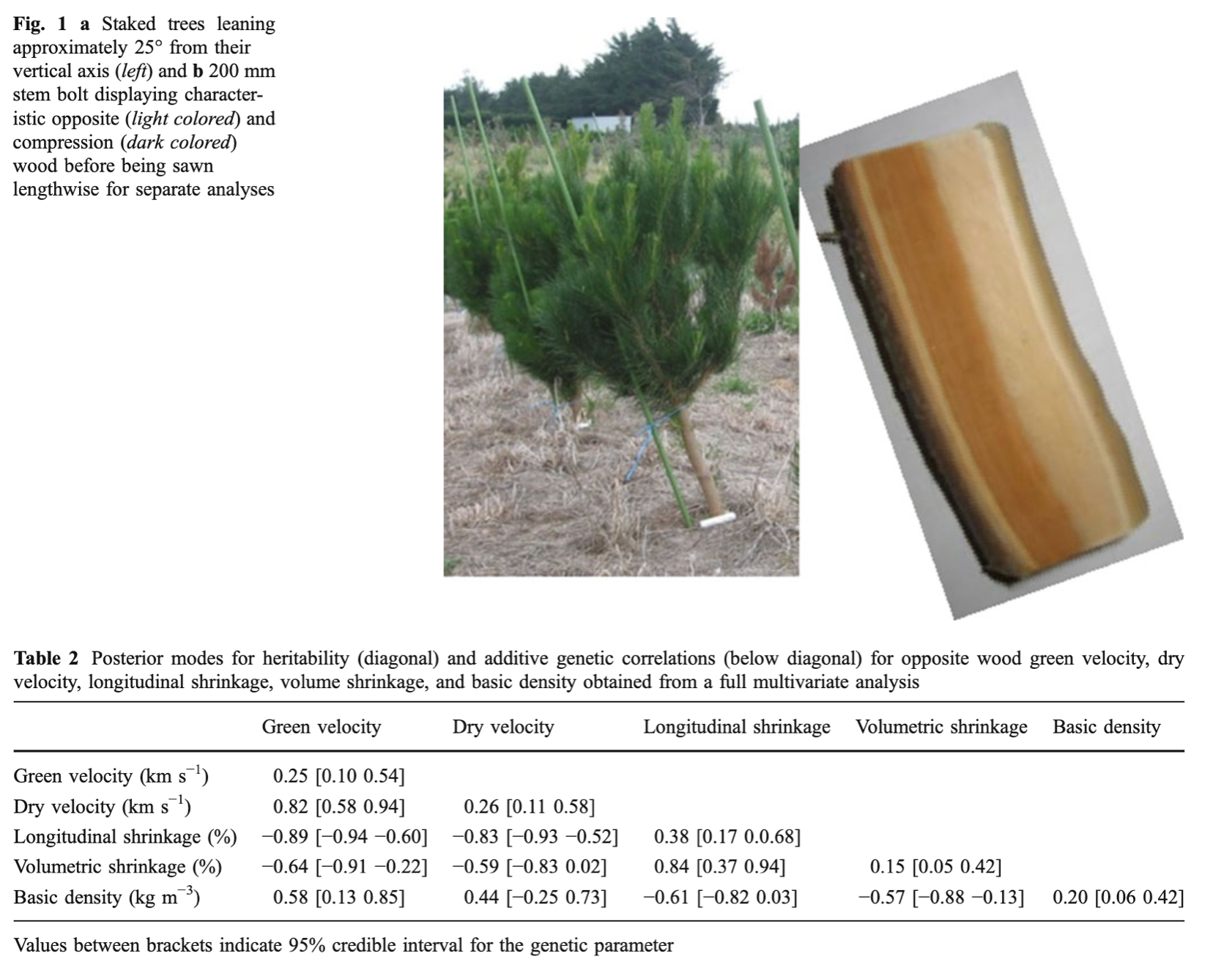Early selection: how early is early enough? Part 3
In my previous post we were able to detect extremes of wood density and stiffness with leaning trees at 8 months of age, vertically splitting the sample to separate normal and compression wood. This was doable, but the size of the wood samples was a tad small to screen large numbers of trees, so we proposed screening parents of a seed orchard with a trial including 49 controlled-pollinated families at ages 2, 3, 4 and 5 (harvesting one quarter of the trees per year).
After 2 years, we processed the first quarter of the trial (492 trees) extracting a 200 mm long stem bolt from the leaning trees (see photo below) and found that:
- Wood properties were under moderate genetic control at 2 years of age, so we felt we could, at least, screen out the worst families.
- There was more environmental variation than desired (particularly soil) and lots of wind, which altered the leaning angle of the trees.
- This variability left us feeling that there was no point on continuing with the experiment in that site (sometimes you win, sometimes you lose) and that we needed to setup an alternative experiment. TO BE CONTINUED. YES, OF COURSE THERE IS ANOTHER EXPERIMENT.
